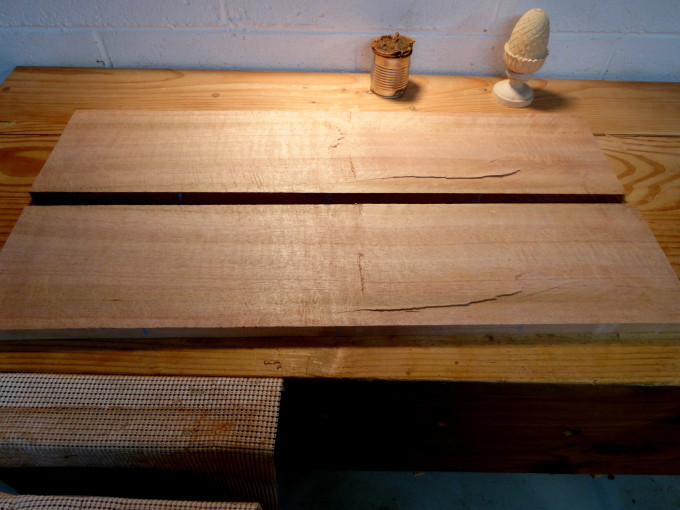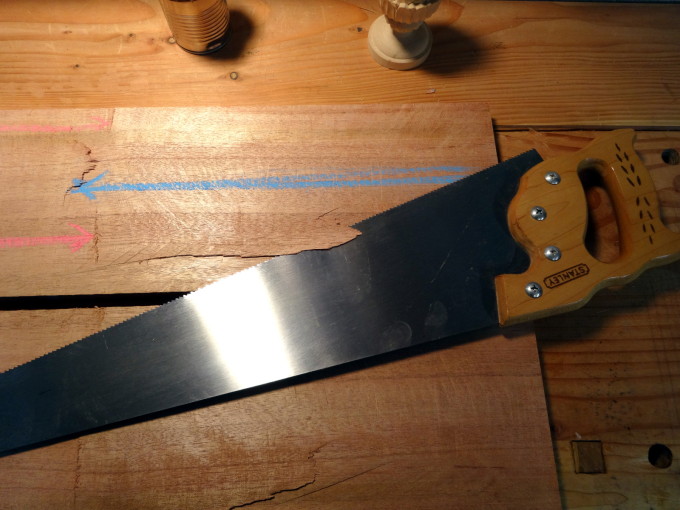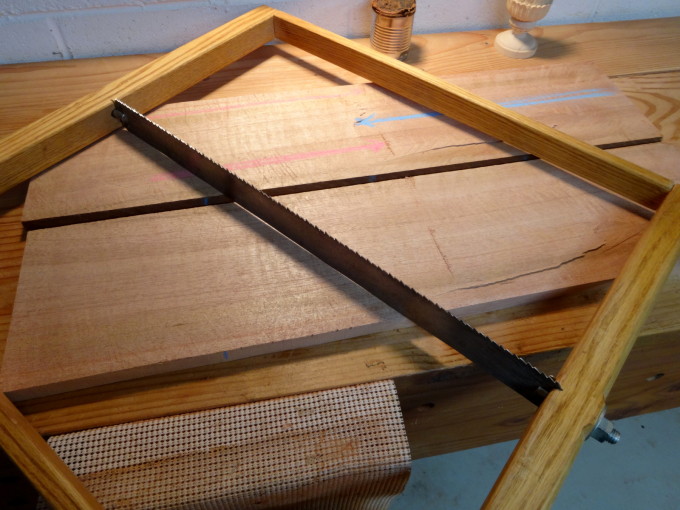This was a purposeful test: Two choices to learn from.
When starting this batch of resawing (mahogany for an Adirondack chair), I reasoned that using the plain ole rip saw would be OK because it was lighter and easier to handle than the 24″ frame saw. At one point I did show the frame saw to a cut in process but quit because the frame saw had decidedly stronger set and I didn’t want to resaw a resawing cut. Then, along came comments from others about frame saws. So, out it came for the second half of a board.
The saws:
The plain saw is a Stanley rip saw of 1970’s vintage, 26″ long, filed at 5 ppi, sharpened just before starting this recent work. Plate thickness is 0.034 inch. Weight: 1 and 1/2 pounds.
The frame saw is one I built from a Disston 1897 saw cut down to 24″ It is filed 4 ppi and I’m not sure when last sharpened. It has an identical plate thickness of 0.034 inch, and something like 50% more set than the plain saw. (I remembered it as 5 ppi, but it really measures 4 ppi.) Weight: 5 pounds.
The lumber for this comparison is an 8/4 piece of mahogany, 7 and 1/4 inches wide and 32 inches long. The resawing line is right down the middle of its thickness.
I sawed the first half with the plain saw (marked with blue chalk in one of the pictures). I added something different to the routine … cutting in from the end at a shallow angle. It was not easy cutting from that direction and I broke the “manhandling” rule. Bad idea! I knew from the feel of the saw that the cut had gone a little wrong, but couldn’t see inside to know how it had gone wrong.
When it came time to cut from the other end, I switched to the frame saw. I kept to the routine prescribed in the previous post, without the shallow cut from the end: the saw didn’t fit well in that position.
The difference is remarkable! While heavier, the weight of the saw makes a bigger difference than I imagined it would. The combination of its weight and slightly stronger set made for both smoother sawing and faster sawing. It was almost twice as fast as the plain saw! Better yet, it has far less tendency to wander. The blade, being held taut from both ends has much less opportunity to go its own way.
More points to add to the learning:
- ALWAYS resaw with the frame saw, no matter what the size of the workpiece. Don’t be tempted to say, “Aw, it’s small, the hand saw will do.” Use the frame saw EVERY time. Even though heavier, the weight of the frame saw is an advantage and the blade under tension significantly adds to accuracy.
- Avoid the shallow, oblique, cut that has too little guidance and too easily goes astray.
- Oh yeah, don’t manhandle it!



Leave a Reply